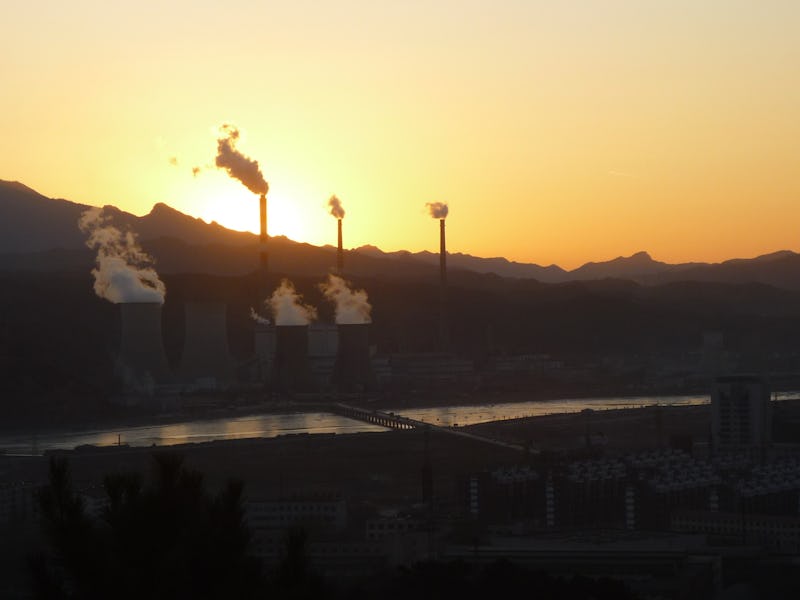China Fights Climate Change Better Than America Now
Researchers in the UK looked into it.

The United States doesn’t always live up to the big game it likes to talk. But we’re really falling behind the competition when it comes to addressing the threats posed by climate change, arguably humanity’s greatest impending existential crisis with the capacity to devastate the species within a few generations.
For another view on how this could all shake out, take a look at China, which hit their peak carbon dioxide emissions back in 2013 (9.5 Gigatons) and have been decreasing their output ever since. Thanks to these measures, China’s CO2 emissions have fallen by over 4.2 percent, according to new research published this week by the University of Cambridge, the University of East Anglia (UEA), and the University College London.
China’s progress is cause for ‘cautious optimism’ among environmentalists, but even climate skeptics ought to be impressed. If climate change really is a hoax perpetrated by the People’s Republic — as has been claimed by the President and others — then China’s State Council’s really going all out for this prank. Xi Jinping is, like, just Andy Kaufman-level or Nathan Fielder-level committed to this bit. ‘Tis a Goof for the Ages!
There are hot spots for climate change conflicts all over the globe.
“In response to the US withdrawal from the Paris Agreement, China has increasingly assumed a leadership role in climate change mitigation,” writes Dabo Guan, a professor of climate change economics at UEA in the UK and a co-author on the recent study.
“This reversal is cause for cautious optimism among those seeking to stabilize the Earth’s climate,” he writes. “Now, the important question is whether the decline in Chinese emissions will persist.”
To answer that question, the researchers, along with colleagues in the US and China, reviewed the most current energy, economic, and industry data from China for the years 2007 through 2016. As published this week in Nature Geoscience, they determined that the main causes for the decline in Chinese emissions were, in Guan’s words, “structural” and “likely to be sustained.”
While the team (led by Guan and Dr Jing Meng of UEA’s Schools of International Development and Environmental Sciences) found that recent dips in economic growth in China did make a national plan to reduce emissions easier, deliberate changes in the nation’s industrial structure and use of coal were decisive factors. Also coming into play were shifts from higher to lower energy intensive economic activities — potentially related to an increase in service industry-type jobs and away from low tech manufacturing — and lower emissions intensity, meaning lower amounts of carbon dioxide emitted per unit energy.
As part of the Paris climate agreement — which the United States is no longer involved with, because it’s too smart to fall for China’s long-con — representatives from Beijing pledged to stop increasing their carbon dioxide emissions by 2030. But if this recent research is any indication and 2013 remains their peak year, then China may have already succeeded, 17 years ahead of schedule.
To be sure, it’s easier to pull off these kinds of massive economic shifts in a highly controlled economy with a topdown government.
But a core part of China’s climate change strategy is actually quintessentially American: It’s deploying a carbon market “cap and trade” approach that Reagan and Bush-era policy makers successfully implemented to deal with acid rain in the late 80s. Currently, China has deployed seven regional pilot programs for their carbon markets which they plan to expand into a nationwide carbon trading marketplace later this year.
As one professor from the Chinese Academy of Sciences in Beijing told the New York Times last summer, “Carbon trading on a national scale will send a signal to the world that China is serious about this.”
At least someone is.